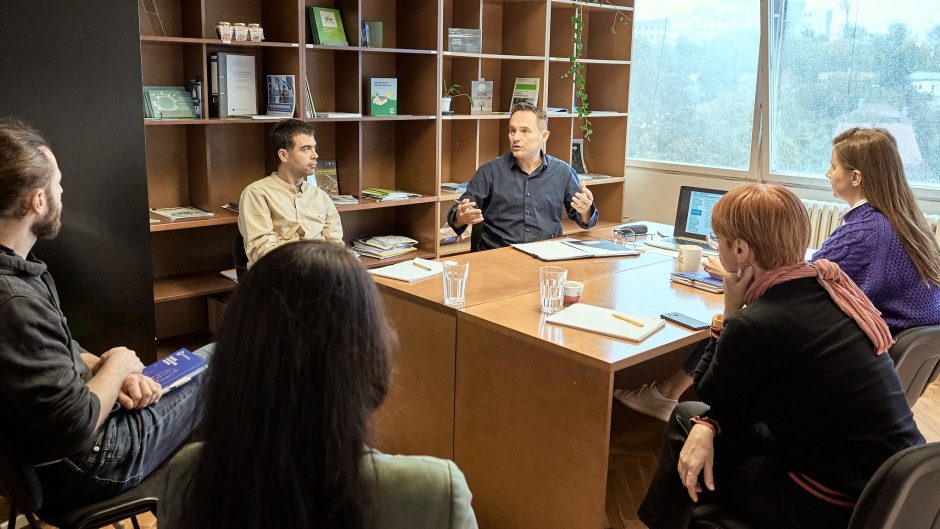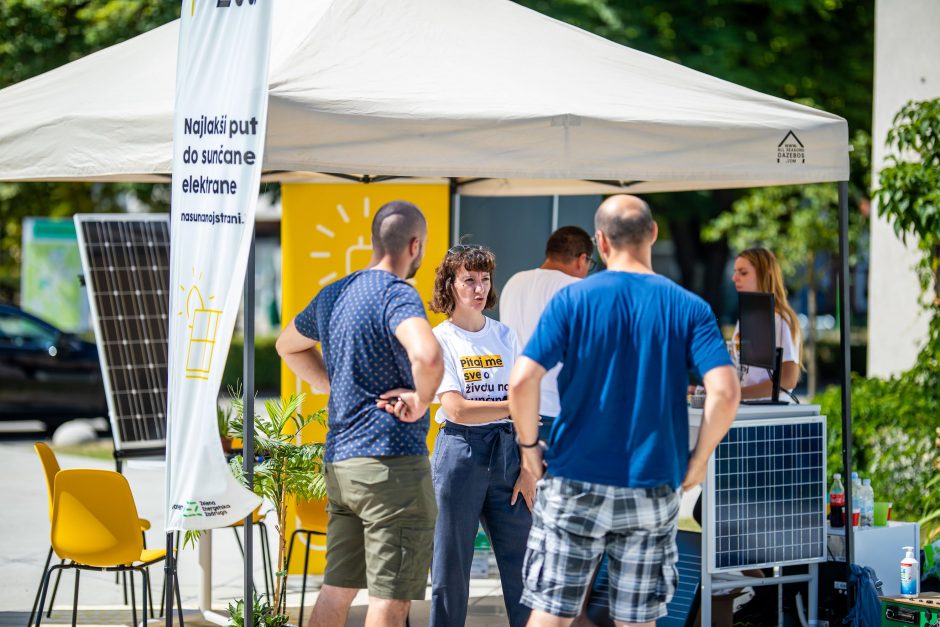With Croatia setting an ambitious renewable energy target for 2030, a local co-operative is trying to encourage more citizens to get involved in clean energy projects.
Set up in 2016, the Green Energy Cooperative grew out of the United Nations Development Programme in Croatia and acts as a support organisation for groups looking to develop renewable energy projects.
Through its National and Climate Plan (NECP), Croatia has set a renewable energy target for 2030 of 36.4%, up from 28% at present.
“Our mission is to support cities and their citizens in developing, investing, and utilising renewable sources of energy. We do that through a variety of projects (EU-funded) and our services,” says Kristina Lauš, communications manager at the Green Energy Cooperative (ZEZ).
One of the projects the co-op runs is SOL4ALL, which aims to make it easier for Croatian citizens to invest and install small solar PV systems in their homes by providing them full support in the process. The co-operative’s goal is to enable 10MW of installed solar PV capacity across the Western Balkans, and by doing so, increase the resilience of cities, encourage a just economic recovery and create green jobs.

“This project has been recognised within the Google.org Impact Challenge for Central and Eastern Europe 2021, meaning we have won a grant and support from Google.org to further develop the service, particularly in terms of its digital aspect and market development,” adds Ms Lauš.
Other projects of the co-op include a Crowdfunding Academy, the first integrated crowdfunding education programme in SE Europe. The academy has so far trained over 500 students, who learnt about how launch a successful crowdfunding campaign. Another project, Agrifficiency sees the Green Energy Cooperative work with agriculture producers and processors, providing technical support and finance to enable them to implement green energy projects.
So far, the Green Energy Cooperative has 20 members, who are employees, supporters and industry experts. Part of its work also focuses on awareness raising, given that co-operatives are not the go-to option for most people.
“A part of our work is getting people to learn about this and showing them by example what can that mean in practice,” explains Ms Lauš.
Related: Community Energy Conference plans the renewables revolution
The co-operative is also working on several research and development projects, exploring how smart meters or Blockchain technology can be used for peer-to-peer trading or the management of energy communities.
“All of this work is supporting the transition to democratising the energy and allowing citizens cheaper energy and also feeds into the policy and EU directives that Croatia is trying to adopt,” says Erica Svetec, project manager at the co-operative.
The Green Energy Cooperative is one of Croatia’s ten energy co-ops, which mostly focus on supporting groups who want to develop renewable energy projects.
One of the main barriers preventing these co-ops from directly participating in the joint production, consumption, and sharing of electricity is legislation.
The country is in the process of amending the existing Act on Renewable Energy Sources and High-efficiency Cogeneration, which will enable energy communities, including co-ops, to participate in the market. Under the draft law an energy community is defined as a legal entity based on voluntary and open participation, which is controlled by members or shareholders and exists to provide environmental, economic or social benefits to its members or shareholders or local areas in which it operates. Therefore, the establishment of a community is limited to a specific area, which could make it difficult for co-ops to attract sufficient members.

“This provision of the law will initially limit the potential for the establishment and development of the Energy Communities and the activities of the Green Energy Cooperative in the coming period will be aimed at pointing out this illogicality and advocating the legislator to mitigate or abolish this provision,” says Ms Lauš.
Furthermore, the law requires members of energy communities to be connected to the same low voltage transformer station 10 (20) / 0.4 kV. Thus, in addition to being located in the same local government area, energy communities must be connected to the same transformer station, which further narrows the number of potential members, especially for sparsely populated areas in Croatia, explains Ms Lauš.
The bill also lacks clarifications on the required legal form of the Energy Community, mentioning that an energy community can be established as a legal entity that operates on the basis of the law governing the financial operations and accounting of non-profit organisations.
“In order to avoid additional complications in business, tax, and financial treatment, it is necessary to clearly define what legal form the Energy Community can be and how its business is conducted,” adds Ms Lauš.
Another barrier for the sector is the fact that most people in Croatia associate co-operatives with forced collectivisation and the old Communist System of the Socialist Federative Republic of Yugoslavia, of which Croatia was part.
“In addition to these ambiguities in the legal definition and potentially tax and financial treatment, there are socio-cultural challenges. We witness a lack of awareness and knowledge about the potential of such a form of organisation, non-recognition of co-operatives as an organisational form, and lack of systematic support. Although Croatia has a rich history when it comes to co-operatives, a certain amount of scepticism towards this type of organisation is present due to them being perceived as an unwanted remnant of the socialist economy.
“New Electricity Market Law is an opportunity to change that, but it is necessary to invest effort into the establishment of good examples of Energy Communities, through which citizens will be shown plastically and transparently how they work in practice and what are all the benefits and potential risks for their involvement,” says Ms Lauš.